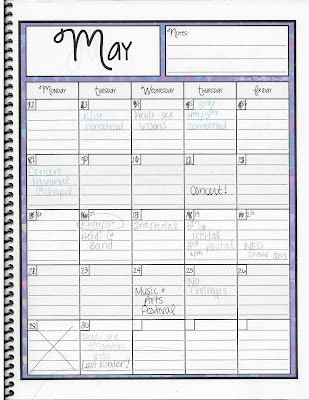Well I've got the winter doldrums. The beginning of the school year starts so fast with excitement and anticipation. Band starts in late September but our first concert is the first week of December! That's maybe 8-10 weeks total to get back in the swing of things for the 5th graders and learn 5 or 6 notes for 4th graders. Some years I have an ambitious group and most of the 4th graders are able to play a song (with 5th grade support) for the December concert but other years it's just not feasible.
So now it's February and it feels like FOREVER until our May concert. Once I've lost motivation from these elementary kids, it's pulling teeth to get them focused again and excited to progress. The Winter Olympics have been inspiring me and I decided to put together a Band Olympics challenge for the kids to help pass some time and get students motivated to keep working on the basics.
Each section (Flute, Clarinet, Trumpet, etc.) is a team and competes throughout the whole month. Some challenges like "Best Rehearsal Etiquette" or "Most Prepared Section" were a continual challenge that I judged during rehearsals. The Low Brass section easily won "Most Enthusiastic" when they came into the first rehearsal waving their team flag!
I reserved about 15-20 minutes at the end of each rehearsal during February to compete in the games. Students knew ahead of time which event would be competing each day and had already submitted to me which student was participating for each event. A few events, like "Longest Note Team Challenge" required a team of 4 to compete together.
We had a BLAST! competing during the month and it motivated students through the long winter months. Here's some games and descriptions we did:
Longest Note: One member from each team will hold a note of their choice for as long as they can.
Fastest Fingers: One member from each team will play a selection from the book as fast as they can with no more than 2 errors, rhythmically or melodically. Book selections must be 8 measures long (4/4 time) or 16 measures long (2/4 time) and be #27 or higher
Rhythm Conquest: One member from each team will compete to count and clap rhythms of quarter, eighth, and half note patterns. Conquest will be elimination style.
Speed Reader: One member from each team will compete to read 20 notes as fast as they can in the clef of their instrument.
100 Meter Dash: One member from each team will play 5 notes up and down as fast as they can. Flute/Low Brass: Bb, C, D, Eb, F. Clarinets/Trumpets: C, D, E, F, G. Saxes: G, A, B, C, D. Horn: F, G, A, Bb, C. Percussion:
200 Meter Dash: One member from each team will play 8 notes up and down as fast as they can.
400 Meter Dash: One member from each team will play 8 notes up and down as fast as they can two times without stopping.
4x4 Relay: Four members from each team will play 5 notes up and down as fast as they can in succession.
Shot Put: One member from each team will play a note of their choice as loud as they can. The sound must not squeak for reeds and the correct partial must be achieved for brasses. The sound level will be measured by a decibel reader.
Tongue Twister: One member from each team will compete to play eighth notes on the pitch of their choice at increasing tempos. Competition will be elimination style.
I made a bulletin board to put up with each of the competitors for each event so students knew who they would be competing against. We would also post the winners from each event and add up the Gold, Silver, and Bronze medals.









































